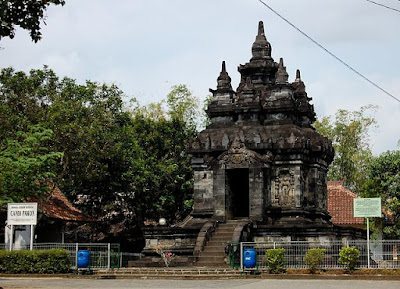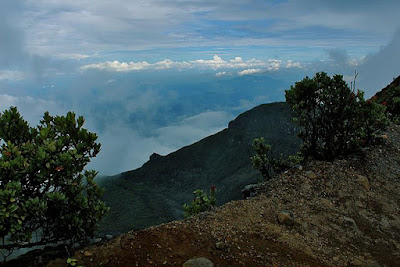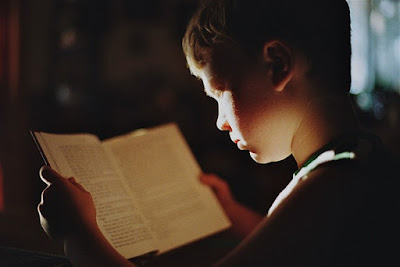THE PAWON TEMPLE IN CENTRAL JAVA
 |
| Image by Wibowo Djatmiko (Wie146) - Own work, CC BY-SA 3.0 |
Besides Borobudur and Mendut, Pawon temple is one of the precious relics in Magelang Regency, Central Java.
Pawon temple is quite small and it is situated in the settlement area of the village. According to some sources of information, this temple was built in the 8th century.
In the days of ancient Mataram kingdom, Pawon temple still functioned as the sacred place of worship. Nowadays, it still takes part in Vesak festival.
In old Javanese language, pawon means ash. People say that this temple was used for keeping the ashes of king Indra, his ancestors and king Samaratungga in Syailendra dynasty.
The temple that is also called Brajanalan is considered to be the place for keeping the thunder god’s weapon. Brajanalan is the Sanskrit word and has become the name of the village where Pawon temple is situated in.
Pawon temple was built in the combination of Javanese Hinduism and Indian architectural style. It sits on a 1.5 m flat raised area magnificently.
Just like most of the temples, the flat raised area of Pawon temple is beautified with the sculptures of climbing vines, people and flowers.
While entering the temple, visitors can see a carved giant head (Kalamakara) without the lower jaw at the top of the entrance gate, which is believed to have the ward of evil power.
The restoration year of the temple (1904) is carved on the left below the Kalamakara head that combines the elements of human and animal.
The restoration work was conducted by Department of Archeology and J.G. de Casparis, a Dutch philologist, as the person in charge. The reliefs of Pawon temple are 100% decoration and there aren’t any stories behind them.
The relief of Kuwera or the god of wealth can be seen at the north and south sides of the temple door that faces the west. There’re also the relief of a pair of strange birds with human heads on the left and right of the temple. Kinara and Kinari are the names of those strange birds.
Although the reliefs are not in perfect condition, the kalpataru tree that is flanked by the strange birds can still be clearly seen.
A pair of flying human beings is carved in the left and right upper walls of the temple. The relief of a kalpataru tree flanked by two flying human beings is very attractive and eye-catching.
Most of the reliefs of human beings and plants can still be seen because the sizes are big. However, the small reliefs eroded by rain are very hard to identify. Those who take care of the temple replaced the damaged reliefs with bricks.
There’s the carving of white lotus that grows out from inside a round vase at a higher position. The carving of white lotus is flanked by two andesitic windows. The windows function as ventilation that release smoke from inside the temple. It is said that the temple was the place for royal cremation.
The temple is enclosed by a one meter wire fence. The distance between the fence and the temple isn’t too wide but it’s enough to gather the Buddhists during a religious ceremony. It is estimated that the temple area was very large in the old days as it was the location for cremating the late kings.
There’re some empty recesses in the room of the temple. In the past, there were Buddha statues in these recesses. Nobody knows where the lost statues are. The Karang Tengah inscription states that the Buddha statues were very bright and shiny, which matches the estimation that the statues were made of bronze in the Bronze Age.
The uniqueness of the temple is beyond my ability to describe. Though it is a Buddhist temple, it has the shape that looks like a Hindu temple.
Pawon temple is quite small and it is situated in the settlement area of the village. According to some sources of information, this temple was built in the 8th century.
In the days of ancient Mataram kingdom, Pawon temple still functioned as the sacred place of worship. Nowadays, it still takes part in Vesak festival.
In old Javanese language, pawon means ash. People say that this temple was used for keeping the ashes of king Indra, his ancestors and king Samaratungga in Syailendra dynasty.
The temple that is also called Brajanalan is considered to be the place for keeping the thunder god’s weapon. Brajanalan is the Sanskrit word and has become the name of the village where Pawon temple is situated in.
Pawon temple was built in the combination of Javanese Hinduism and Indian architectural style. It sits on a 1.5 m flat raised area magnificently.
Just like most of the temples, the flat raised area of Pawon temple is beautified with the sculptures of climbing vines, people and flowers.
While entering the temple, visitors can see a carved giant head (Kalamakara) without the lower jaw at the top of the entrance gate, which is believed to have the ward of evil power.
The restoration year of the temple (1904) is carved on the left below the Kalamakara head that combines the elements of human and animal.
The restoration work was conducted by Department of Archeology and J.G. de Casparis, a Dutch philologist, as the person in charge. The reliefs of Pawon temple are 100% decoration and there aren’t any stories behind them.
The relief of Kuwera or the god of wealth can be seen at the north and south sides of the temple door that faces the west. There’re also the relief of a pair of strange birds with human heads on the left and right of the temple. Kinara and Kinari are the names of those strange birds.
Although the reliefs are not in perfect condition, the kalpataru tree that is flanked by the strange birds can still be clearly seen.
A pair of flying human beings is carved in the left and right upper walls of the temple. The relief of a kalpataru tree flanked by two flying human beings is very attractive and eye-catching.
Most of the reliefs of human beings and plants can still be seen because the sizes are big. However, the small reliefs eroded by rain are very hard to identify. Those who take care of the temple replaced the damaged reliefs with bricks.
There’s the carving of white lotus that grows out from inside a round vase at a higher position. The carving of white lotus is flanked by two andesitic windows. The windows function as ventilation that release smoke from inside the temple. It is said that the temple was the place for royal cremation.
The temple is enclosed by a one meter wire fence. The distance between the fence and the temple isn’t too wide but it’s enough to gather the Buddhists during a religious ceremony. It is estimated that the temple area was very large in the old days as it was the location for cremating the late kings.
There’re some empty recesses in the room of the temple. In the past, there were Buddha statues in these recesses. Nobody knows where the lost statues are. The Karang Tengah inscription states that the Buddha statues were very bright and shiny, which matches the estimation that the statues were made of bronze in the Bronze Age.
The uniqueness of the temple is beyond my ability to describe. Though it is a Buddhist temple, it has the shape that looks like a Hindu temple.



Comments
Post a Comment